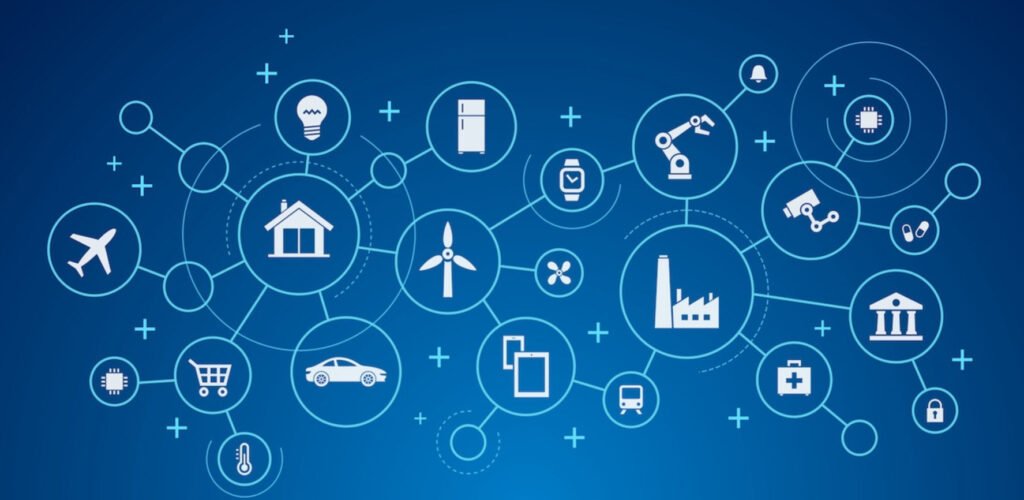
The Internet of Things (IoT) has rapidly transformed the way we interact with technology, promising enhanced convenience and efficiency across various domains. However, as the IoT ecosystem continues to expand, so do the challenges related to its security. Protecting the vast network of interconnected devices presents a formidable task, as it involves navigating a multitude of vulnerabilities and potential threats.
Let’s checkout the key challenges that cast a shadow over the security of IoT networks and explore the measures required to mitigate these risks.
- Securing Wireless-Enabled Connected Devices
- Firmware and Software Updates
- Secure Communication between Nodes
- Detecting Vulnerabilities
- Authentication and Authorization Process
- Security of Mobile and Web Applications
- Wireless Connectivity Security
- Ensuring Data Integrity and Privacy
- Security of Cloud Applications
- Maintaining Stability of a Complex Network
1. Securing Wireless-Enabled Connected Devices
The proliferation of wireless-enabled devices in IoT networks opens the door to various attack vectors. These devices can be vulnerable to unauthorized access, data breaches, and manipulation if not properly secured.
2. Firmware and Software Updates
Ensuring that the firmware and software of IoT devices are regularly updated is vital. Unpatched devices can be exploited by attackers who leverage known vulnerabilities to gain unauthorized access.
3. Secure Communication between Nodes
The communication between IoT devices, often referred to as nodes, must be encrypted and protected to prevent eavesdropping and unauthorized access. Without secure communication, sensitive data is at risk.
4. Detecting Vulnerabilities
IoT networks span multiple layers, from hardware to software. Identifying vulnerabilities across these layers is challenging and requires constant vigilance to detect and mitigate potential threats.
5. Authentication and Authorization Process
Securing the authentication and authorization process of connected devices is crucial. Without robust authentication mechanisms, unauthorized devices could gain access, leading to unauthorized control and manipulation.
6. Security of Mobile and Web Applications
Mobile and web applications are often used to manage IoT networks. The security of these applications is paramount, as vulnerabilities could provide attackers with an entry point to compromise the entire network.
7. Wireless Connectivity Security
The wireless nature of IoT networks exposes them to various security risks. Wireless signals can be intercepted, leading to unauthorized access or data breaches if not properly protected.
8. Ensuring Data Integrity and Privacy
Data integrity and privacy are paramount in IoT networks, as they deal with sensitive and often personal information. Without proper safeguards, data could be altered or accessed by malicious actors.
9. Security of Cloud Applications
Many IoT networks rely on cloud-based platforms for data storage and processing. Ensuring the security of these cloud applications is essential to prevent unauthorized access to sensitive data.
10. Maintaining Stability of a Complex Network
IoT networks are complex ecosystems with numerous interconnected devices. Ensuring the stability of such networks is challenging, as any disruption or compromise can have far-reaching consequences.
In conclusion, while the IoT promises transformative benefits, its rapid growth introduces a host of security challenges. Securing these networks requires a multifaceted approach that encompasses device security, encryption, software updates, authentication protocols, and ongoing monitoring.
Industry collaboration, robust security standards, and continuous research are essential to staying ahead of the evolving threat landscape. By addressing the challenges head-on and implementing comprehensive security measures, we can unlock the full potential of IoT while safeguarding sensitive data and maintaining the trust of users in this interconnected digital world.
You may also like:- Gmail and Facebook Users Advised to Secure Their Accounts Immediately
- Pentagon’s Proactive Approach to Cybersecurity – Over 50,000 Vulnerability Reports Since 2016
- Windows Hardening – Key Points To Remember
- Top 10 Fundamental Questions for Network Security
- How to Remove x-powered-by in Apache/PHP for Enhanced Security
- 12 Point Checklist – PHP Security Best Practices
- Secure Programming Checklist – 2023 Compilation Guide
- The Ultimate Network Security Checklist – 2023 Complete Guide
- A Comprehensive Guide to Crafting Strong Passwords
- Top 28 Essential Tips To Safeguard Your Computer








